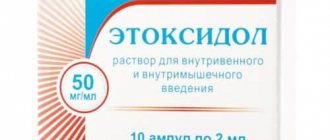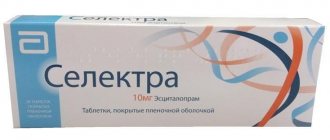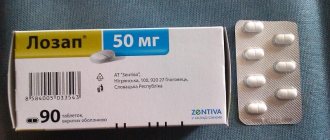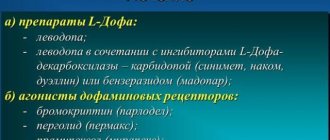Treatment for peptic ulcers varies depending on your medical history and individual symptoms.
According to modern medical protocols, treatment of a stable patient with a chronic ulcer is carried out with oral medications. But if hemorrhages develop, surgical intervention is prescribed. Numerous reviews of the drug Lancid Kit indicate that the medicine is quite often prescribed by gastroenterologists. Due to the fact that 3 different types of drugs are collected in one package, a comprehensive fight against H. Pylori is provided. The single drug Lancid, the main component of which is lansoprazole, is also available for purchase. The medicine can be used during an exacerbation of peptic ulcer disease.
Lancid Kit set of tabs/capsules (Micro Labs)
Before starting therapy, it is necessary to exclude the presence of a malignant process (especially with a stomach ulcer), since treatment, masking symptoms, can delay the correct diagnosis. Clarithromycin Long-term use of antibiotics can lead to the formation of colonies with an increased number of insensitive bacteria and fungi. In case of superinfection, appropriate therapy must be prescribed. Liver dysfunction (increased concentrations of liver enzymes in the blood plasma, hepatocellular and/or cholestatic hepatitis with or without jaundice) has been reported with the use of clarithromycin. Liver dysfunction can be severe but is usually reversible. There have been cases of fatal liver failure, mainly associated with the presence of serious concomitant diseases and/or concomitant use of other drugs. If signs and symptoms of hepatitis such as anorexia appear. jaundice, darkening of urine, abdominal tenderness on palpation, it is necessary to immediately stop clarithromycin therapy. In the presence of chronic liver diseases, regular monitoring of blood plasma enzymes is necessary. During treatment with almost all antibacterial agents, including clarithromycin, cases of pseudomembranous colitis have been described, the severity of which can vary mild to life-threatening. Antibacterial drugs can change the normal intestinal microflora, which can lead to the growth of Clostridium difficile. Pseudomembranous colitis caused by Clostridium difficile should be suspected in all patients who experience diarrhea after using antibacterial agents. After a course of antibiotic therapy, careful medical monitoring of the patient is necessary. Cases of the development of pseudomembranous colitis have been described 2 months after taking antibiotics. Clarithromycin should be used with caution in patients with coronary heart disease (CHD), severe heart failure, hypomagnesemia, severe bradycardia (less than 50 beats/min), as well as when used simultaneously with antiarrhythmic drugs drugs of class IA (quinidine, procainamide) and class III (dofetilide, amiodarone, sotalol). In these conditions and while taking clarithromycin with these drugs, you should regularly monitor the electrocardiogram for an increase in the QT interval. It is possible to develop cross-resistance to clarithromycin and other macrolide antibiotics, as well as lincomycin and clindamycin. In the event of acute hypersensitivity reactions, such as anaphylactic reaction, Stevens-Johnson syndrome, toxic epidermal necrolysis, drug rash with eosinophilia and systemic symptoms (DRESS syndrome), Henoch-Schönlein purpura, discontinue clarithromycin immediately and initiate appropriate therapy. Worsening of symptoms has been reported in patients taking clarithromycin myasthenia gravis. In case of combined use with warfarin or other indirect anticoagulants, it is necessary to monitor MHO and prothrombin time. Amoxicillin Before starting amoxicillin, it is necessary to collect a detailed history regarding previous hypersensitivity reactions to penicillins, cephalosporins or other allergens. Serious and sometimes fatal hypersensitivity reactions (anaphylactic reactions) to penicillins have been described. The risk of such reactions is highest in patients with a history of hypersensitivity reactions to penicillins. If allergic reactions occur, you must stop taking amoxicillin and start therapy with an antibiotic from a different group. In case of serious hypersensitivity reactions, appropriate measures should be taken immediately. Epinephrine administration, oxygen therapy, intravenous corticosteroids, and airway management, including intubation, may also be required. It is necessary to refrain from using amoxicillin if infectious mononucleosis is suspected, since in patients with this disease, amoxicillin can cause a morbilliform skin rash, making diagnosis difficult. Long-term treatment amoxicillin sometimes leads to excessive proliferation of insensitive microorganisms. During the use of amoxicillin, it is recommended to periodically evaluate renal, liver and hematopoietic function. Amoxicillin should be used with caution in patients with impaired liver function. Liver function should be monitored on a regular basis. In patients with impaired renal function, the dose of amoxicillin should be reduced according to the degree of impairment. Amoxicillin can provoke nonspecific binding of immunoglobulins and albumins to the red blood cell membrane, which can cause a false-positive reaction in the Coombs test. Crystalluria very rarely occurs in patients with reduced diuresis. When carrying out amoxicillin therapy, adequate fluid intake and maintaining sufficient diuresis are extremely important. In patients with cholangitis or cholecystitis, antibiotics can be prescribed only if the disease is mild and in the absence of cholestasis. During therapy with amoxicillin, it is necessary to remember the possible development of superinfection (usually caused by bacteria of the genus Pseudomonas spp. or fungi of the genus Candida). In this case, amoxicillin therapy should be discontinued and/or appropriate treatment should be prescribed. If severe diarrhea persists, antibiotic-induced pseudomembranous colitis, which may be life-threatening, should be suspected (watery stool mixed with blood and mucus; dull widespread or colicky abdominal pain; fever, sometimes tenesmus). In such cases, amoxicillin should be immediately discontinued and pathogen-specific treatment, such as vancomycin, should be prescribed. In this case, drugs that reduce gastrointestinal perilstatics are contraindicated. The excretion of amoxicillin leads to its high content in the urine, which can lead to false-positive results when determining glucose in urine (for example, Benedict's test, Fehling's test). In this case, it is recommended to use the glucose oxidase method for determining the concentration of glucose in the urine. If simultaneous use of amoxicillin with anticoagulants is necessary, prothrombin time or INR should be carefully monitored when prescribing or discontinuing amoxicillin. When using estrogen-containing oral contraceptives and amoxicillin simultaneously, other or additional methods should be used if possible contraception. Particular caution is recommended for patients with allergic diathesis or bronchial asthma, a history of gastrointestinal diseases (in particular, colitis caused by antibiotic treatment). When taking amoxicillin for a long time, nystatin, levorin or other antifungal drugs should be prescribed simultaneously. During treatment It is not recommended to drink alcohol. Lansoprazole It is recommended to avoid the combined use of proton pump inhibitors and clopidogrel. When used together, the risk of recurrent myocardial infarction, hospitalization for a heart attack or unstable angina, stroke, and repeated revascularization increases. If co-administration is absolutely necessary, patients should be closely monitored. It is recommended to avoid the combined use of proton pump inhibitors and antiretroviral drugs in HIV-infected patients. If combined use with atazanavir/ritonavir is necessary, it is recommended to maintain a 12-hour interval between taking lansoprazole and these drugs, and not to exceed the dose of lansoprazole 30 mg. When used together with antiretroviral drugs (indinavir, nelfinavir, atazanavir), as well as ketoconazole, itraconazole, posaconazole, cefpodoxime, cefuroxime and ampicillin, monitoring for their effectiveness and the emergence of resistance is necessary. Concomitant use with imatinib may increase the risk of adverse reactions (potential interaction via CYP3A4), especially in individuals with a history of severe allergic reactions. Due to the increased risk of myotoxicity, patients patients taking atorvastatin, lovastatin or simvastatin should be carefully monitored during concomitant use of lansoprazole. In patients taking concomitant warfarin, prothrombin time and MHO should be monitored. Long-term use of proton pump inhibitors increases the risk of infection (including Salmonella, Campylobacter, Clostridium difficile). The benefit of preventing bleeding from the upper gastrointestinal tract must be weighed against the potential risk of developing ventilator-associated pneumonia. Long-term use of proton pump inhibitors increases the risk of fractures in women during menopause. During treatment, alcohol should be avoided. Pharmacogenetic factor. The effectiveness of the drug depends on the genetic polymorphism of CYP2C19. In patients classified as “slow metabolizers” (RM-type), the effectiveness is higher; eradication of Helicobacter pylori is significantly more often achieved compared to “fast metabolizers” (homEM-type), even against the background of resistance to clarithromycin. “O syndrome if recommendations are followed.” the duration of use is not typical for lansoprazole. Effect on the ability to operate machinery and a car During the treatment period, care must be taken when driving vehicles and engaging in other potentially hazardous activities that require increased concentration and speed of psychomotor reactions, as the drug can cause weakness, drowsiness and dizziness .
Side effects
In case of hypersensitivity to active substances or auxiliary components, allergic reactions are possible.
With the use of lansoprazole, the following are possible:
- headache;
- general malaise;
- daytime sleepiness;
- unmotivated feeling of anxiety;
- depression;
- abdominal pain;
- decreased appetite;
- dyspeptic disorders;
- intestinal dysfunction (diarrhea or constipation);
- cough;
- runny nose;
- hair loss;
- increased skin sensitivity to ultraviolet radiation;
- intestinal candidiasis;
- pain in muscles and joints.
Clarithromycin, with long-term use, can provoke the development of fungal infections of the gastrointestinal tract against the background of dysbacteriosis, as well as gastroenteritis and pseudomembranous colitis. Possible sleep disturbances, disturbances in olfactory perception, changes in taste, nervousness, tinnitus, trembling of limbs (tremor), nosebleeds, dry mouth, belching, increased gas formation in the intestines and spastic muscle contractions.
Amoxicillin can cause confusion, cholestasis, hepatitis, anorexia, flatulence and diarrhea.
Interaction with other drugs
This drug is believed to:
- slows down the elimination of drugs metabolized in the liver;
- reduces the clearance of theophylline;
- slows down the absorption of drugs from the group of weak acids;
- interferes with the absorption of ampicillin and iron salts;
- accelerates the absorption of drugs from the base group.
If necessary, Lancid can be prescribed simultaneously with the drugs Indomethacin, Ibuprofen, Warfarin, Propranolol, Phenytoin, Prednisolone. It is also possible to use oral contraceptives when treating with this drug.
The bioavailability of the drug Lancid itself may be reduced by Sucrofalt. Therefore, the interval between taking these two drugs should be at least 30-40 minutes.
The patient can take antacids one hour before Lancid. You can drink them 1-2 hours after using this medicine. Drugs in this group can reduce the absorption of Lancid.
Composition and release form
This medicine is supplied to the market in hard gelatin capsules (size No. 3). Actually, the drug “Lantid” itself is small white granules. The main active ingredient of this medicine is lansoprazole. Each capsule of this substance contains 15-30 mg. Additional components of this medicine are lactose monohydride, mannitol, povidone, sucrose, hypromellose, cetyl alcohol, phtholate.
The capsules themselves for the drug are made from gelatin, sodium lauryl sulfate, titanium dioxide and some other components. In pharmacies, this medicine is usually sold in blisters packed in cardboard boxes.
There is a slightly different form of this medicine on sale today - Lancid Kit. The active ingredient in this drug is the same - lansoprazole. The indications and contraindications for this drug are also no different from Lancid. The prefix “Kit” only means that the drug is a product included in the kit. That is, not only capsules, but also tablets are packed in blisters in packs.
Release form and composition
Lancid is produced in the form of capsules: hard gelatin, with the inscription “MICRO/MICRO”; 15 mg each – bluish-green (turquoise) color, size No. 3; 30 mg each – pink, size No. 1; the contents of the capsules are pellets (granules) of almost white or white color (10 pieces in blisters, 3 blisters in a cardboard box).
1 capsule contains:
- Active ingredient: lansoprazole – 15 or 30 mg;
- Excipients (15/30 mg of active ingredient): mannitol – 129.7/189 mg, sucrose – 16.6/52 mg, lactose monohydrate – 13/26 mg, hypromellose phthalate – 18.2/34.3 mg, povidone – 3.5/14.9 mg, cetyl alcohol – 2/3.8 mg;
- Capsule body (15/30 mg of active ingredient): gelatin – 24.7626/38.9575 mg, sodium lauryl sulfate – 0.024/0.0376 mg, propyl parahydroxybenzoate – 0.24/0.376 mg, methyl parahydroxybenzoate – 0.06/0.094 mg, titanium dioxide – 0.5557/0.712 mg, brilliant blue dye – 0.0034/0 mg, quinoline yellow dye – 0.0042/0 mg, crimson dye (Ponceau 4R) – 0/0.0078 mg, water – 4, 35/6.815 mg;
- Capsule cap (15/30 mg of active ingredient): gelatin – 16.5084/24.0376 mg, sodium lauryl sulfate – 0.016/0.0232 mg, propyl parahydroxybenzoate – 0.04/0.058 mg, methyl parahydroxybenzoate – 0.16/0.232 mg, titanium dioxide – 0.3705/0.4393 mg, brilliant blue dye – 0.0022/0 mg, quinoline yellow dye – 0.0028/0 mg, crimson dye (Ponceau 4R) – 0/0.0048 mg, water – 2.9/4.205 mg.
Indications
It is not recommended to prescribe or take medicine without consulting a doctor. The specialist takes into account the individual characteristics of the person, the course of the disease, and draws up a treatment plan.
Interesting! The nuances of using the drug Pepsan-R: cheap analogues
Lancid Kit is prescribed in the following cases:
- The patient was diagnosed with reflux esophagitis.
- With the development of non-ulcerative dyspepsia.
- For the treatment of Zollinger-Ellison syndrome.
- During the treatment of peptic ulcer of the digestive tract, which is at the acute stage.
With the development of erosive-ulcerative esophagitis, doctors prescribe the drug to their patients. The same applies to stress ulcers of the digestive system.
Drug interactions
When Lancid is used in combination with certain drugs, the following effects may develop:
- Drugs metabolized in the liver by microsomal oxidation (indirect anticoagulants, diazepam, phenytoin): slower elimination;
- Theophylline: decreased clearance;
- Medicines related to weak acids: slowing down pH-dependent absorption;
- Drugs belonging to groups of bases: acceleration of absorption;
- Ketoconazole, ampicillin, iron salts, digoxin: preventing their absorption;
- Sucralfate: decreased bioavailability of lansoprazole (a break of 30-40 minutes should be observed between doses);
- Antacids: slowing down and reducing the absorption of lansoprazole (a 1-2 hour break between doses should be observed).









